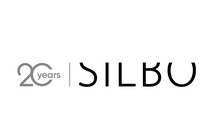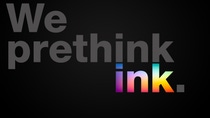Dispersions & Resins
“Changing to water-based inks is worth it”

Marcin Śpiewok, President of SILBO
Tell us about SILBO’s story so far as it relates to packaging.
From the beginning, we have been focused on packaging. We started with packaging for fruit and vegetables, and we subsequently developed and expanded our offering over the years. Today we have some great achievements. This year we got a Silver Innovation Award at the biggest fruit and vegetables convention, Fruit Logistica in Berlin, for our fully compostable packaging printed with water-based inks.
We also develop packaging for other sectors, both food and non-food. But our main focus is still fruit and veg.
How did your switch to water-based inks work?
Sustainability was our mission right from the start, but it was not always clear how to proceed. Twenty years ago, the environmental impact of packaging was hardly an issue. Sustainable solutions were something of interest, but they were not a main goal for anyone.
Then, five years ago, we reassessed our priorities in a changing world – with renewable energy, electric cars, air pollution and other issues coming to the fore – and decided the timing was right. We had to take a step, take a risk, and fully align the company – both our philosophy and the technology we use – towards a set of environmental targets. One of the main steps was changing from solvent-based inks to water-based inks – without any compromises. We did it irrespective of materials to be printed on, or any difficulties we envisaged. We knew it would be expensive and challenging, but we did it. Today we are proud to say that there is no limit to what we can print with water-based ink.
Are there any differences in performance between water and solvent-based inks?
We print on a wide range of materials: film, plastics, paper and compostable materials. Our experience tells us it is possible to fully match the performance of traditional inks in terms of material properties and behavior of the material in a packaging machine. When we plan a new project, water-based inks are always part of it – there are never any reasons why we wouldn’t be able to use them. We are absolutely convinced of this technology.
Why did you decide to join the PRETHINK INK network?
The first time I heard about PRETHINK INK, I was immediately very positive. More discussion about water-based ink is a good thing for the market. We need to break the stereotypes surrounding water-based inks – that quality is worse, the price is high, you cannot use them for all applications… We do still see customers today who are not entirely convinced. So PRETHINK INK could be a great accelerator to show customers that this type of printing is not just a dream or part of our corporate strategy to make us different – it really is a worldwide and serious development.
Why is ink base an issue more stakeholders in the packaging industry should be interested in?
Industry norms are changing already. To communicate our change, we decided to create our own logo with a water drop, signifying water-based inks, and put it on all our printed packaging.
Some customers at the beginning were a bit skeptical. But a year or so later, once we had got the mark established, things had changed totally – customers were actually asking us to put the logo on packaging! It’s like the recycling mark: telling end users what their product consists of. You can see it on products in Lidl in Poland now – with the same size and weight as the logo saying the packaging is compostable. It shows that there is real demand now.
Do you have any advice for companies considering switching to water-based inks?
Be brave in taking that first step. It’s like the growing uptake of electric cars. When manufacturers first changed from combustion-based engines to electric, retailers and customers had a lot of doubts. Before you drive such a car, you will never be really convinced. Then, when you start driving it, you learn how it works, and you suddenly discover the benefits. But you have to make that first step. This is the challenge, and many printers could not accept it. But it’s worth it, especially looking at the environmental aspect.
What do you think the future holds for inks and packaging as a whole?
The change will not stop with water-based inks. Water-based lamination and compostable packaging are two other trends that we are supporting with the products we manufacture. It is all about closing the loop, minimizing waste and protecting the environment.
A few facts about our interview partner:
Name: Marcin Śpiewok
Role: President
Company: SILBO
Founded in: 2000
Specialisms: Environmentally friendly packaging for fruit, vegetables and other food use
Describe your company in 10 words: Making ground-breaking products that set trends in the field of packaging














